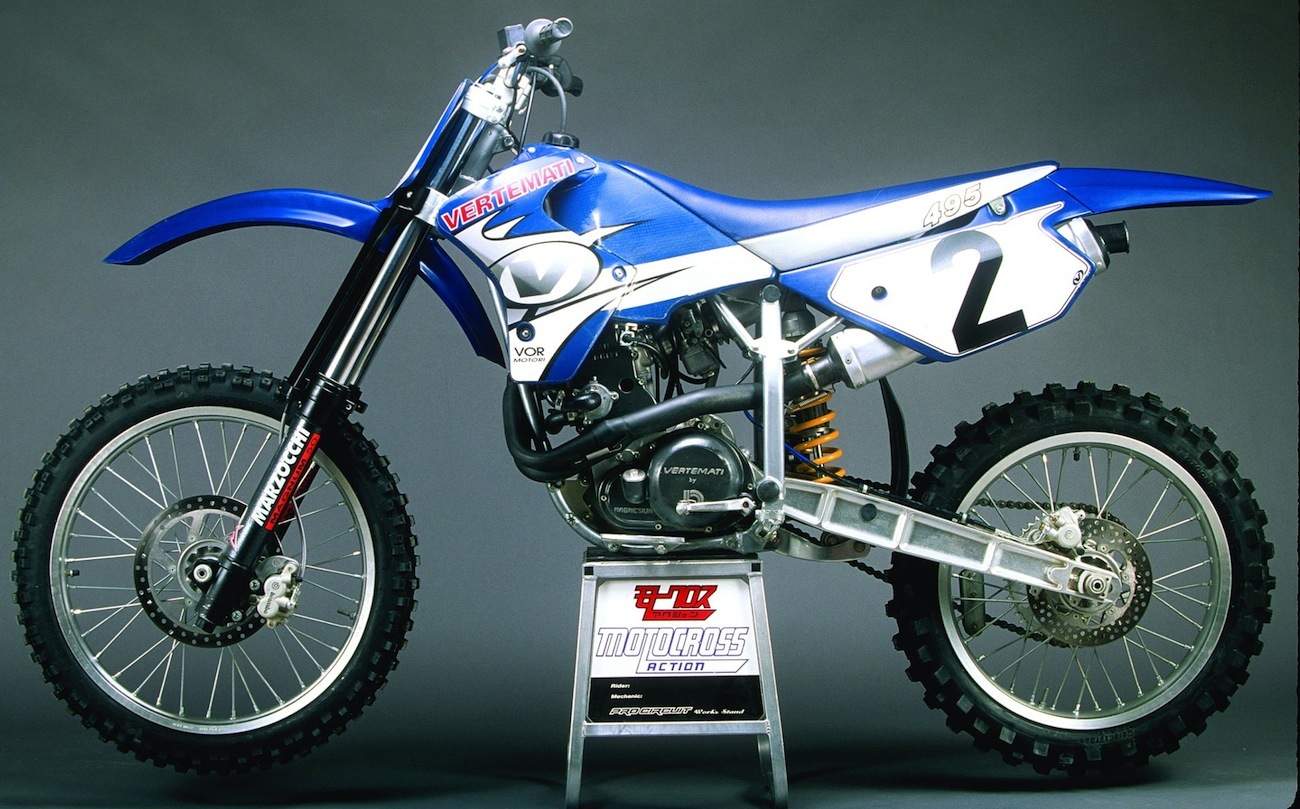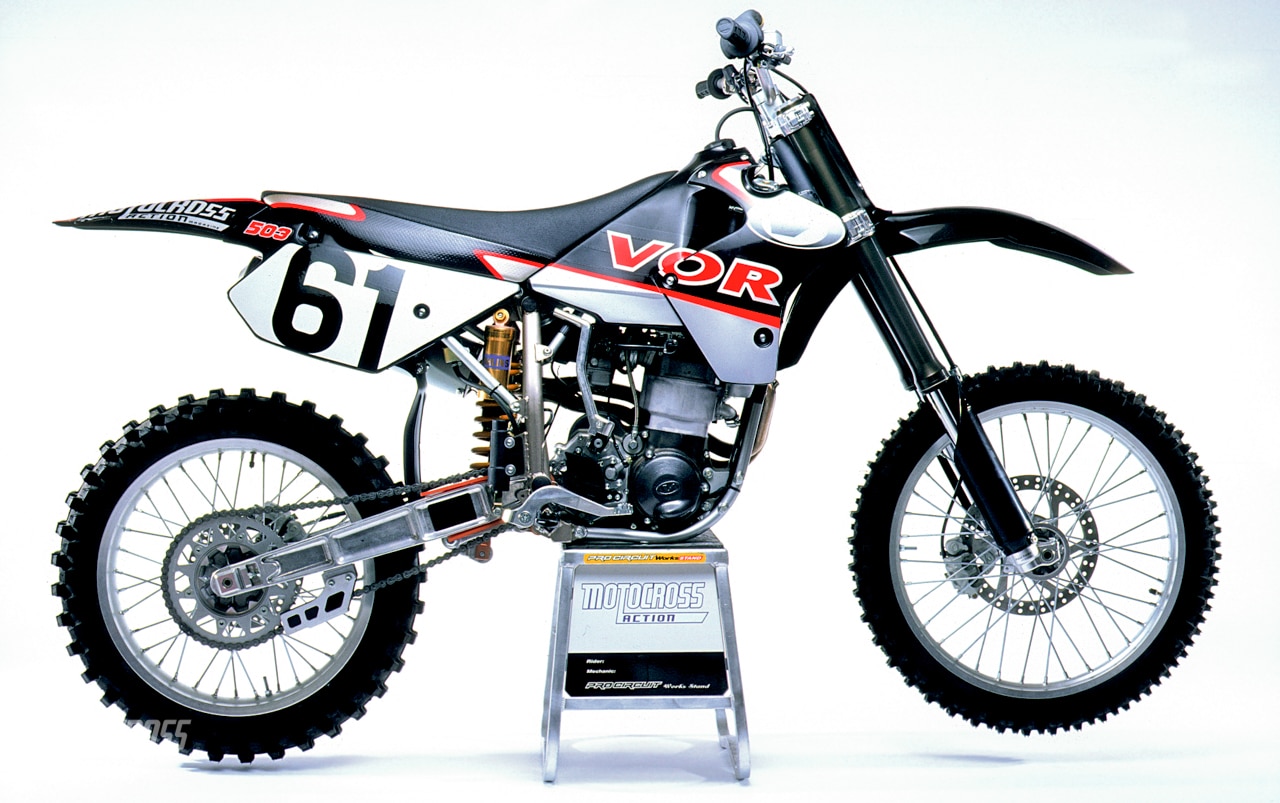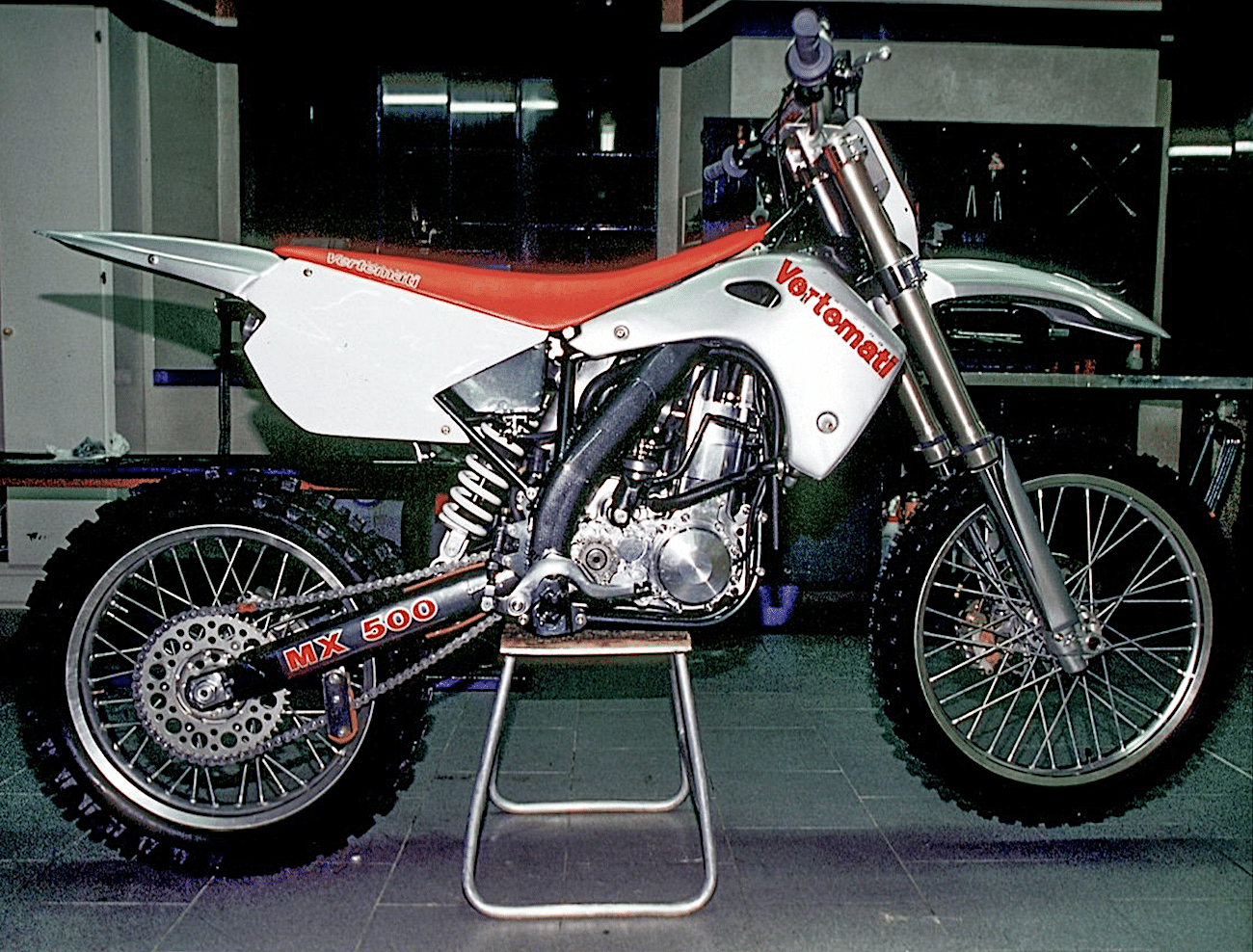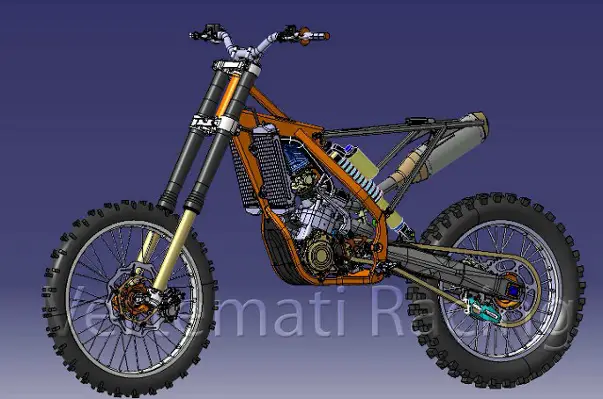BIKES YOU’VE NEVER SEEN BEFORE: VERTEMATI 495 & VOR/VERTEMATI 503
 1999 Vertemati 495 has both the Vertemati and VOR logos on it.
1999 Vertemati 495 has both the Vertemati and VOR logos on it.
The Vertemati 495 was the rarest of all bikes. Alvaro and Guido Vertemati were originally the Husqvarna importers for Italy, but when Cagiva purchased the Swedish brand (and moved it to Italy), the brothers switched their allegiance to Husaberg. In the early days of the Vertemati/Husaberg alliance the brothers fielded a high-end 500 Grand Prix racing team that was a contender for the crown. However, as the Vertemati brothers were gearing up to build a potpourri of special racing components, the Husaberg factory out-bid them for their star rider, Joel Smets. In the end, the Vertematis decided to build their own bike (although it relied heavily on the Husaberg top-end). The result was a very, one-off program with most parts built in-house at the brother’s small shop in Truggio, Italy. It was considered the greatest four-stroke ever made, but was it?
 MXA’s Willy Musgrave testing the 1999 Vertemati 495, with its three-up transmission, bolt-together frame and 256-pound weight.
MXA’s Willy Musgrave testing the 1999 Vertemati 495, with its three-up transmission, bolt-together frame and 256-pound weight.
So few were made that it was never tested by anyone outside of the Vertemati payroll. Then, in 1999 MXA was given a Vertemati by the factory. We didn’t find it to be all that great. We roasted it for its awkward three-up tranny (with neutral at the bottom), 256-pound dry weight (33 pounds more than a 2021 KTM 450SXF), slack head angle (that made it corner like the Pacific Limited), bolt-together frame (which was a flexy flyer) and mismatched Marzocchi/Ohlins suspension (neither end was balanced). We called it a “train wreck” and suggested that the only thing this bike had going for it was its unavailability.
 2000 VOR V503 doesn’t have the name Vertemati on it anywhere.
2000 VOR V503 doesn’t have the name Vertemati on it anywhere.
As you would expect Vertemati was incensed that MXA would criticize their iconic bike—and we never expected to hear from them again, but a year later they delivered us the 2000 VOR V503. Why? The Vertemati brothers were ill-equipped to make production motorcycles, so VOR was set up as the production arm of Vertemati, so that the brothers could concentrate on racing. It was not a good relationship. VOR went to great expense to set up an assembly line and begin to pumping bikes out in greater numbers than the brothers ever made. However, the Vertemati brothers and VOR had a falling out.
 Four-time National Champion Gary Jones racing the Vertemati/VOR 495 at the the San Bernardino Supercross.
Four-time National Champion Gary Jones racing the Vertemati/VOR 495 at the the San Bernardino Supercross.
This break-up meant that although VOR was producing Vertemati machines, these were based on the original Vertemati designs, and over time the logos on the bike changed from Vertemati to Vertemati/VOR and later to just VOR. So while a VOR is a Vertemati, the Vertemati brothers own rights to their name and have continued to produce bikes up to this day that are branded Vertemati—mostly Supermoto models in small numbers.
But thanks to Vertemati/VOR there are more than a few of the machines around and they wanted MXA to test the latest version. When we uncrated the new Vertemati we were surprised to find that the bike had been redesigned. Gone was the three-up tranny. In it’s place was a standard-issue one-down/four-up unit. Gone was the slack Union Pacific head angle. The new model had the head pulled back to make the bike turn. Gone is the mismatched Marzocchi/Ohlins suspension package. Vertemati/VOR not only changed fork suppliers, but went from right-side-up to upside-down. It was less of a one-off project and more of a production machine (befitting the money thrown into the project by investors).
What did we think? The 2000 VOR/Vertemati would have been the best four-stroke motocross bike made—if Yamaha hadn’t introduced the YZ400 in the same time period. Given the reality of the YZ400, the Vertemati was still a sweet motorcycle. The engine was a thing of beauty. It’s powerband was blessed with a healthy output, predictable delivery and robust response. But it was a year too late. There were a smattering of VORs sold in the USA, but they are few and far between, but we admired their owner’s passion.
 A late model Vertemati MX500, circa 2004, with a CNC-machined engine and bolted and welded frame.
A late model Vertemati MX500, circa 2004, with a CNC-machined engine and bolted and welded frame.
There is no doubt that cutting ties with VOR, nipped Vertemati’s growth in the bud. They were craftsman, who made very special machines, warts and all, but without VOR, they became such a rarity that most motorcycle racers never saw one.
2009 VERTEMATI “INCLINED” ENGINE DESIGN
 Vertemati’s computer drawing of their future engine shared a remarkable similarity to the 2010Y amahaYZ450F engine design, right down to the Tornado exhaust pipe.
Vertemati’s computer drawing of their future engine shared a remarkable similarity to the 2010Y amahaYZ450F engine design, right down to the Tornado exhaust pipe.
Although Vertemati faded from the scene, they didn’t stop trying to make waves in the motocross business. This computer generated drawing of the Vertemati brothers proposed inclined engine at the exact same time that Yamaha introduced its the backwards engine design on the 2010 450F, had lots of people shaking their heads.

The 2010 YZ450F was the first production motocross bike with an inclined (tilted backwards) engine. According to the Vertemati brothers, their new engine would have the cylinder inclined rearward also. The lubrication system would be separated for clutch, gearbox and crankcase. The water-cooled engine would have double-overhead-cams. The fuel injection would be downdraft from the front of the cylinder head.

The fuel injector’s throttle body would sits at the front of the engine and directs its charge downward into the head.
Every few years Vertemati would introduce a new bike or prototype, but they were basically a cottage industry manufacturer after breaking ties with VOR.






Comments are closed.